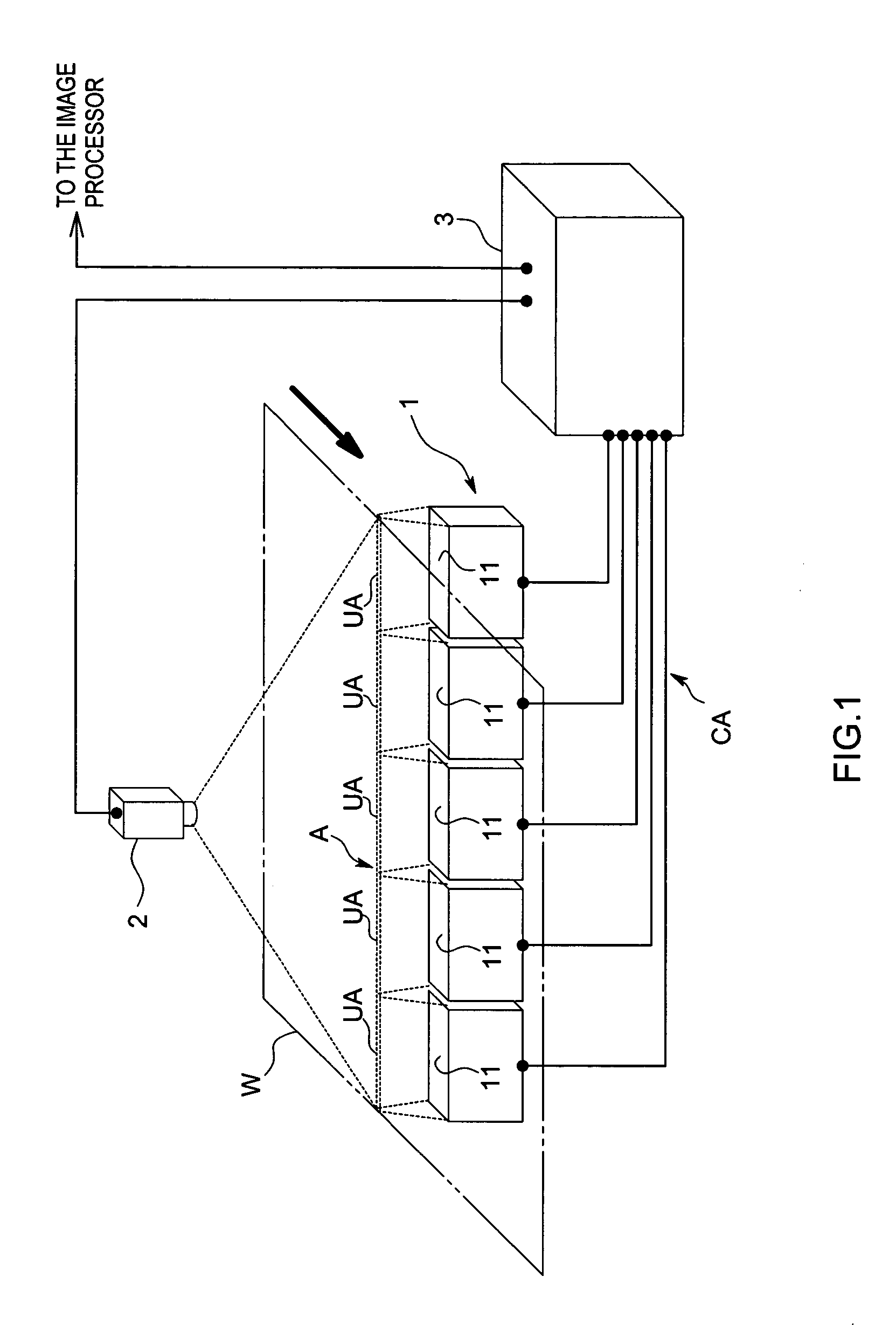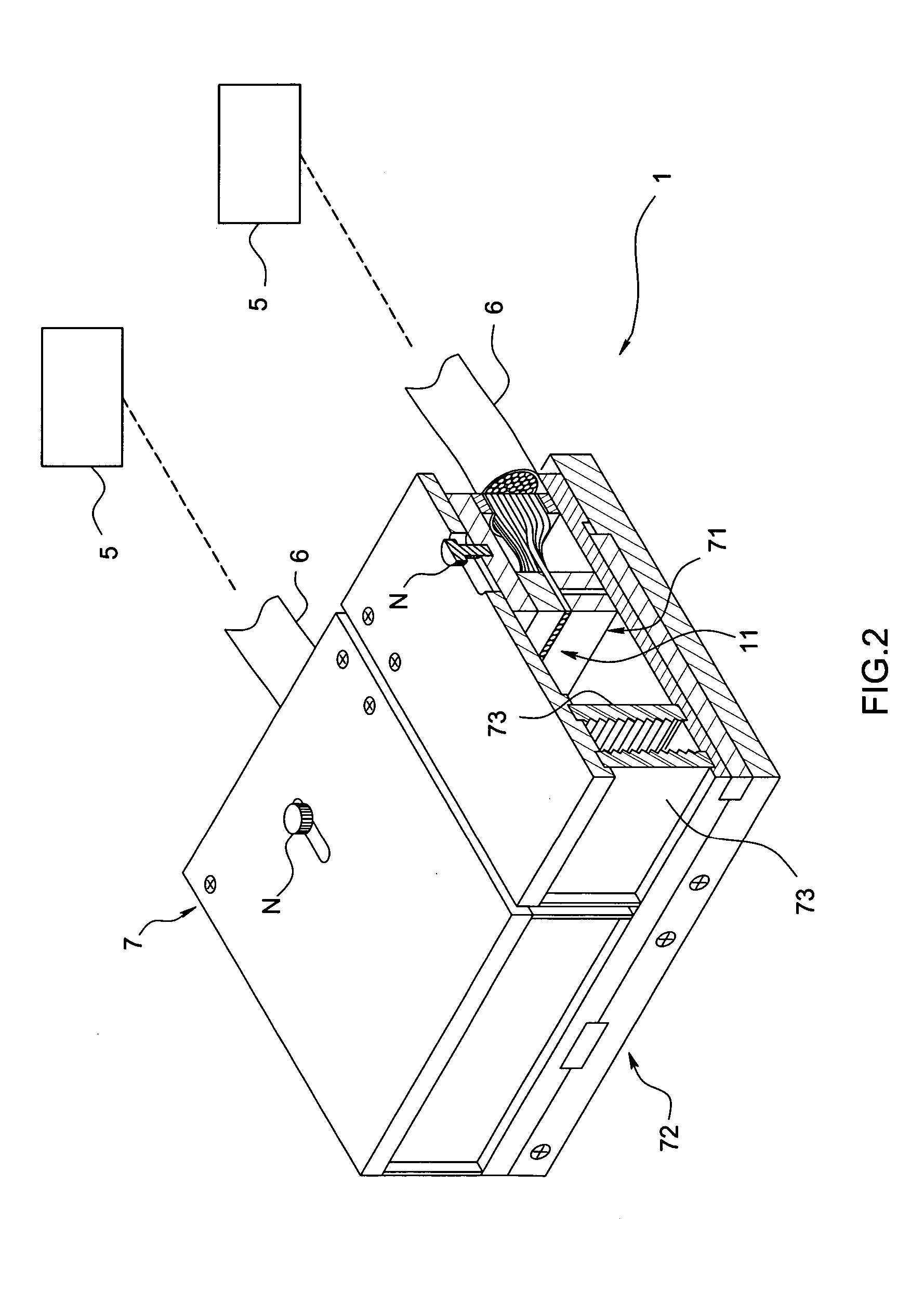Light intensity adjusting system
a technology of light intensity and adjustment system, which is applied in the field of light intensity adjustment system, can solve the problems of specific risk of variance in the detection of defects, deleterious effect on the accuracy of detecting defects, image deterioration, etc., and achieve the effect of improving scan accuracy, reducing or making unnecessary image compensation processing, and positive generating
- Summary
- Abstract
- Description
- Claims
- Application Information
AI Technical Summary
Benefits of technology
Problems solved by technology
Method used
Image
Examples
first embodiment
[0054]FIG. 1 indicates an overall summary of a light intensity control system related to the present embodiment. This light intensity control system is, for example, used in a surface scan of a product, etc.; the scan object (work piece) W of the present invention is, for example, a continuous object such as translucent paper or film; and is set up to flow in a predetermined direction at a fixed speed.
[0055]Accordingly, as indicated in the same diagram, this light intensity control system comprises: a light irradiation device 1 that has multiple independently light intensity adjustable light irradiation units 11, and irradiates light toward the back surface predetermined region of said work piece W; a photographic device 2 that photographs the light irradiated predetermined target area A from the front surface through a lens not indicated in the diagram, and outputs target area images, which are the photographed images; and a light intensity control unit 3 that controls the respecti...
second embodiment
[0069]Next, a second embodiment of the present invention will be explained based on the diagrams. Further, in the following explanation the same codes will be used for members that correspond to those of said first embodiment.
[0070]The light irradiation system of this second embodiment has nearly the same configuration as that of said first embodiment. However, there is a slight difference in the configuration of the functions of the light intensity control unit 3. The explanation below will concentrate on the points of difference from the first embodiment, and an explanation of common points will be omitted.
[0071]The light intensity control unit 3 of this embodiment is connected to the various power LEDs 5 through current cable CA, and controls the current supplied to these. As indicated in the functional block diagram in FIG. 8, comprises: a power source 35; an image separation unit 31 that separates said image signals into unit area image signals for every unit area UA; represent...
PUM
| Property | Measurement | Unit |
|---|---|---|
| current | aaaaa | aaaaa |
| light intensity | aaaaa | aaaaa |
| area | aaaaa | aaaaa |
Abstract
Description
Claims
Application Information
 Login to View More
Login to View More - R&D
- Intellectual Property
- Life Sciences
- Materials
- Tech Scout
- Unparalleled Data Quality
- Higher Quality Content
- 60% Fewer Hallucinations
Browse by: Latest US Patents, China's latest patents, Technical Efficacy Thesaurus, Application Domain, Technology Topic, Popular Technical Reports.
© 2025 PatSnap. All rights reserved.Legal|Privacy policy|Modern Slavery Act Transparency Statement|Sitemap|About US| Contact US: help@patsnap.com



